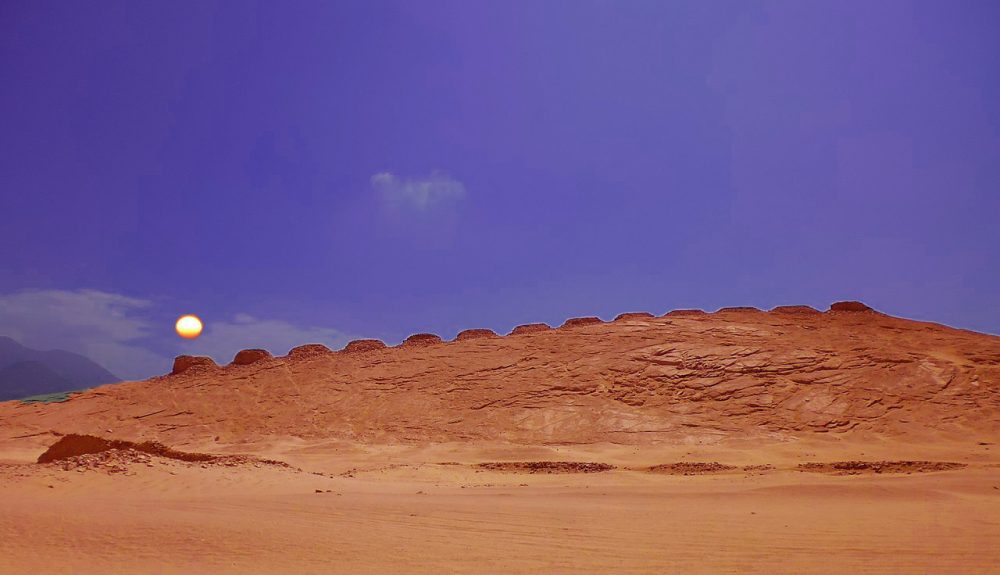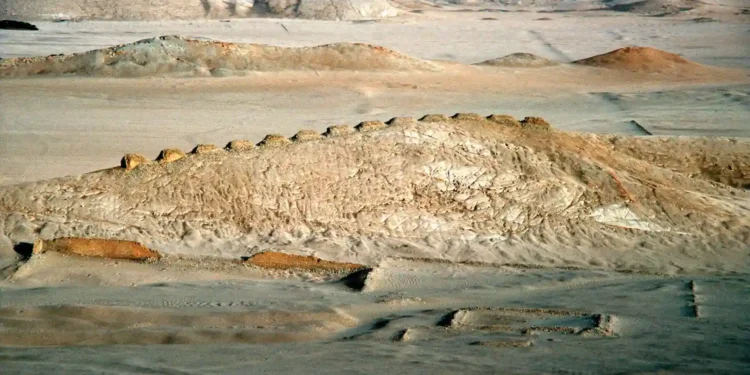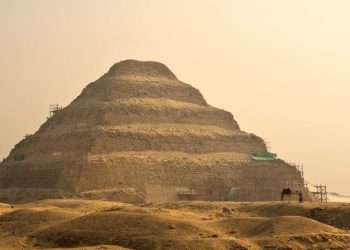Long before clocks, calendars, or written records of astronomy, a forgotten civilization in the Peruvian desert was already marking time with the rising sun. More than 2,300 years ago, they built something that still works today. Thirteen stone towers stretch across a low ridge at Chankillo, aligned so precisely with the solar year that the sun appears to rise between a different pair of towers every few days.
This ancient observatory, still functional after two millennia, is the earliest known solar tracking system that covers the entire year. It was not symbolic. It was practical. And it was built by people whose names we no longer know, but whose knowledge survives in stone.

A calendar written on the horizon
Chankillo is located in the Sechura Desert of northern Peru. The site consists of a series of thirteen towers built in a straight line, flanked by two viewing platforms placed to the east and west. From either point, the towers create a jagged line against the sky. As the year progresses, the sun appears to rise and set at different points along that line.
On the June solstice, the sun rises behind the rightmost tower. By the December solstice, it has moved to the leftmost one. Each sunrise between those extremes falls neatly between a different pair of towers. This layout allows an observer to estimate the date with remarkable accuracy just by watching where the sun appears on the horizon. But what makes this site so cool is that Chankillo doesn’t track a single moment in the year. It tracks all of them.
Who built Chankillo?
No one knows for sure. The people who constructed the site left no written language, no recorded history. Archaeologists date it to around 300 BCE, but little else is certain. What remains is evidence of careful planning, labor, and astronomical knowledge.
The surrounding structures suggest that Chankillo was more than a simple tool. It likely served a ceremonial or religious function. A class of priests or elite observers may have controlled the calendar, using it to organize planting seasons, festivals, or rituals connected to the movement of the sun.
Watching the sky without tools
The builders of Chankillo did not have metal instruments or optical devices. They worked with stone, sunlight, and a deep understanding of the sky. They shaped the land itself into a calendar that required no moving parts and no maintenance.
From the observation points, the sun can still be tracked today just as it was centuries ago. There is no guesswork. The alignment is deliberate, and the results are reliable. This is not primitive science, and this is exactly what I mean when I say advanced civilizations existed before. Because Chankillo is exact, grounded in patient observation and knowledge passed down over generations.
In a desert climate, the timing of rain and planting could mean the difference between abundance and famine. Predicting the seasons was not a curiosity. It was essential. By creating a way to track the sun’s movement across the year, the people of Chankillo gained the ability to prepare for seasonal changes with confidence.
The solstices also carried deep symbolic meaning in many ancient cultures. The longest and shortest days of the year often marked the turning points in stories of life, death, and renewal. Chankillo may have served as a sacred space for observing those transitions, a place where nature and ritual met.
A site unlike any other
Other ancient observatories still stand, but Chankillo is in a class of its own. Stonehenge came earlier, but it marks only one moment in the year. The Maya watched the skies too, tracking planets like Venus and measuring the equinoxes, but they built their structures more than a thousand years later.
What sets Chankillo apart is its purpose. This wasn’t a temple with an occasional alignment or a ceremonial site that happened to face the sun. It was designed to follow the solar cycle from start to finish. Every sunrise and every sunset had a place in its design. It was a calendar built from stone, meant to last.
Today, Chankillo still watches the sky. The towers are weathered and worn, but their alignment has not changed. If you visit at dawn and stand where ancient observers once stood, the sun will rise between the same towers it did thousands of years ago. That moment connects you to them, not through words or myths, but through light.
The people who built Chankillo left no books or inscriptions. Their names are gone. But they understood the sky, and they left behind something that still speaks. The observatory works because it was made with knowledge and intent. It marks time, but it also holds memory. In silence, it reminds us how long humans have looked to the sun for answers, and how much they once knew.











